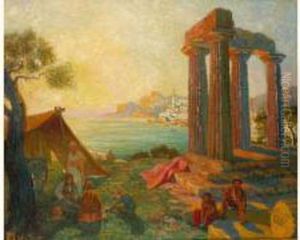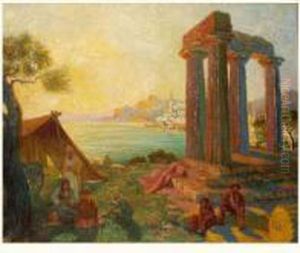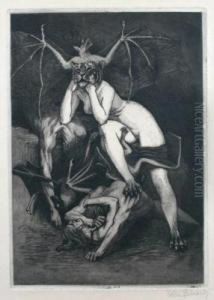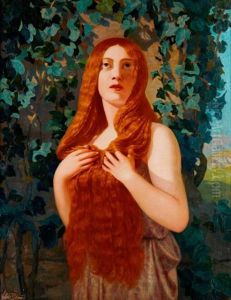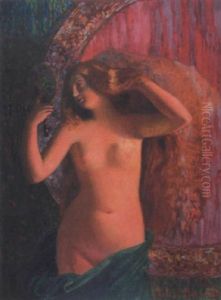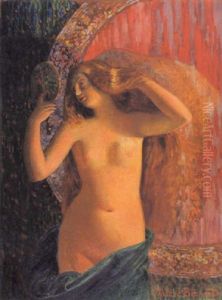Francois-Marius Valere-Bernard Paintings
François-Marius Granet, often known as Valère-Bernard, was a French artist born on December 19, 1860, in Marseille, France. He was known for his multifaceted contributions to the art world, including painting, engraving, and writing. Valère-Bernard was deeply influenced by the regionalist movement in France, which sought to capture the unique cultural and historical identity of specific regions within the country.
Valère-Bernard studied at the École des Beaux-Arts de Marseille and later in Paris. His work often focused on Provençal themes, reflecting his strong attachment to the culture and landscapes of Provence, a region in the southeastern part of France. He was associated with the Félibrige movement, a literary and cultural association that aimed to preserve and promote the Occitan language and Provençal traditions. His involvement in this movement greatly influenced his subject matter and style, which often incorporated elements of Provençal folklore and rural life.
Throughout his career, Valère-Bernard exhibited his work at various salons and received recognition for his contributions to regionalist art. His paintings often featured the bright and vivid colors characteristic of the Mediterranean region, and he was adept at capturing the unique light and atmosphere of the Provençal landscape. Aside from painting, he also created illustrations for books, and his graphic work is noted for its delicate lines and attention to detail.
Valère-Bernard was not only a visual artist but also a writer and poet. His literary works further expressed his passion for Provence and its cultural heritage. He wrote in both French and Occitan, contributing to the literary vibrancy of the region. His artistic and literary endeavors made him an important figure in the cultural life of Marseille and the broader Provençal region.
François-Marius Valère-Bernard passed away on March 14, 1936, in Saint-Marc-Jaumegarde, France. His legacy lives on in the museums and collections that house his works, and he remains a celebrated figure in the history of regionalist art in France. His commitment to capturing the essence of Provence has left a lasting impact on the cultural memory of the region.
